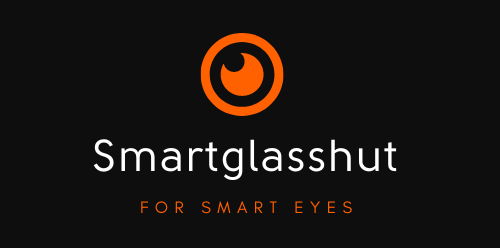What exactly are Smartglasses?
What Are Smart Glasses? An Overview
In the rapidly evolving landscape of wearable technology, smart glasses have emerged as a groundbreaking innovation. These devices, which seamlessly blend the digital and physical worlds, are transforming how we interact with information and our surroundings. This article provides an overview of smart glasses, their features, applications, and the challenges they face.
Understanding Smart Glasses
Smart glasses are wearable devices that incorporate a miniature computer display into a pair of eyeglasses. Unlike traditional glasses, they offer augmented reality (AR) or mixed reality (MR) capabilities, transforming users’ perceptions of the world around them by overlaying digital information onto the real world. This technology provides users with valuable insights, immersive experiences, and hands-free interaction with digital content.
How Do Smart Glasses Work?
At the core of smart glasses lies a sophisticated display system, typically positioned in the user’s field of vision. This display projects digital content, such as text, images, videos, or 3D objects, onto the lens or a transparent screen. The content is carefully aligned with the user’s view, creating a seamless blend of the physical and virtual worlds.To enable this, smart glasses employ advanced technologies, including cameras, sensors, processors, and wireless connectivity. Cameras capture the user’s surroundings, allowing the device to understand the environment and overlay digital information accordingly. Sensors, such as gyroscopes and accelerometers, track the user’s head movements, enabling the device to adjust the displayed content in real-time based on the user’s perspective. Additionally, smart glasses often incorporate audio capabilities, such as built-in speakers or bone conduction technology, to provide sound feedback or voice commands.
Key Features and Capabilities
Smart glasses come with a variety of features that enhance their functionality:
- Display of Digital Content: They can display notifications, messages, maps, and images directly onto the user’s field of vision, providing a hands-free and convenient way to access information.
- Built-in Camera: Many models include cameras for taking photos and videos, with some offering advanced features like facial recognition or 3D scanning.
- Augmented Reality (AR) Experiences: By superimposing digital elements onto the real-world environment, smart glasses allow users to see virtual objects as if they were part of the physical world, opening up endless possibilities for gaming, education, training, and other interactive experiences.
- Voice Control: Integration with virtual assistants like Siri or Google Assistant enables hands-free interaction through voice commands.
- Fitness Tracking: Some smart glasses include fitness tracking functions, similar to those found in GPS watches.
- Real-time Translation: Useful for international business meetings or travel, some models offer real-time translation capabilities.
- Remote Assistance: Professionals can benefit from remote assistance features, allowing experts to guide technicians or workers through the glasses’ display and voice communication functions.
Applications of Smart Glasses
Smart glasses have found applications across various industries, offering endless possibilities:
- Business and Enterprise: In industries such as manufacturing, logistics, and field services, workers can receive real-time information, instructions, and remote assistance directly through their smart glasses, improving productivity, accuracy, and safety.
- Healthcare: Medical professionals can access patient information, medical records, and diagnostic data hands-free. Surgeons can benefit from augmented reality overlays during complex procedures, enhancing precision.
- Education and Training: Smart glasses offer immersive learning experiences by overlaying interactive educational content onto real-world objects, making learning more engaging and effective.
- Gaming and Entertainment: Users can experience virtual worlds, play augmented reality games, or watch movies on a virtual big screen, all while maintaining a connection with the real environment.
- Accessibility: Smart glasses can assist individuals with visual impairments by providing real-time visual descriptions or reading assistance, as well as navigational support and object recognition.
Challenges and Future Potential
Despite their potential, smart glasses face several challenges that hinder mass-market adoption. These include balancing functionality and wearability at an affordable cost, ensuring comfort, and integrating cooling mechanisms to compensate for intense computation. Additionally, the sheer number of components needed to make AR glasses function, such as cameras, displays, processors, and power supplies, presents design challenges.However, the future of smart glasses looks promising. As technology advances, we can expect improvements in display quality, battery life, and overall design. Tech giants like Apple, Samsung, and Meta are already working on AR-powered smart glasses, indicating a bright future for this technology.
An Integral Part Of Daily Life
Smart glasses represent a significant leap forward in wearable technology, offering a unique blend of digital and physical experiences. With applications spanning various industries and continuous advancements in technology, smart glasses are poised to become an integral part of our daily lives. As we navigate the challenges and embrace the potential of this innovative eyewear, the future of smart glasses looks incredibly promising.
